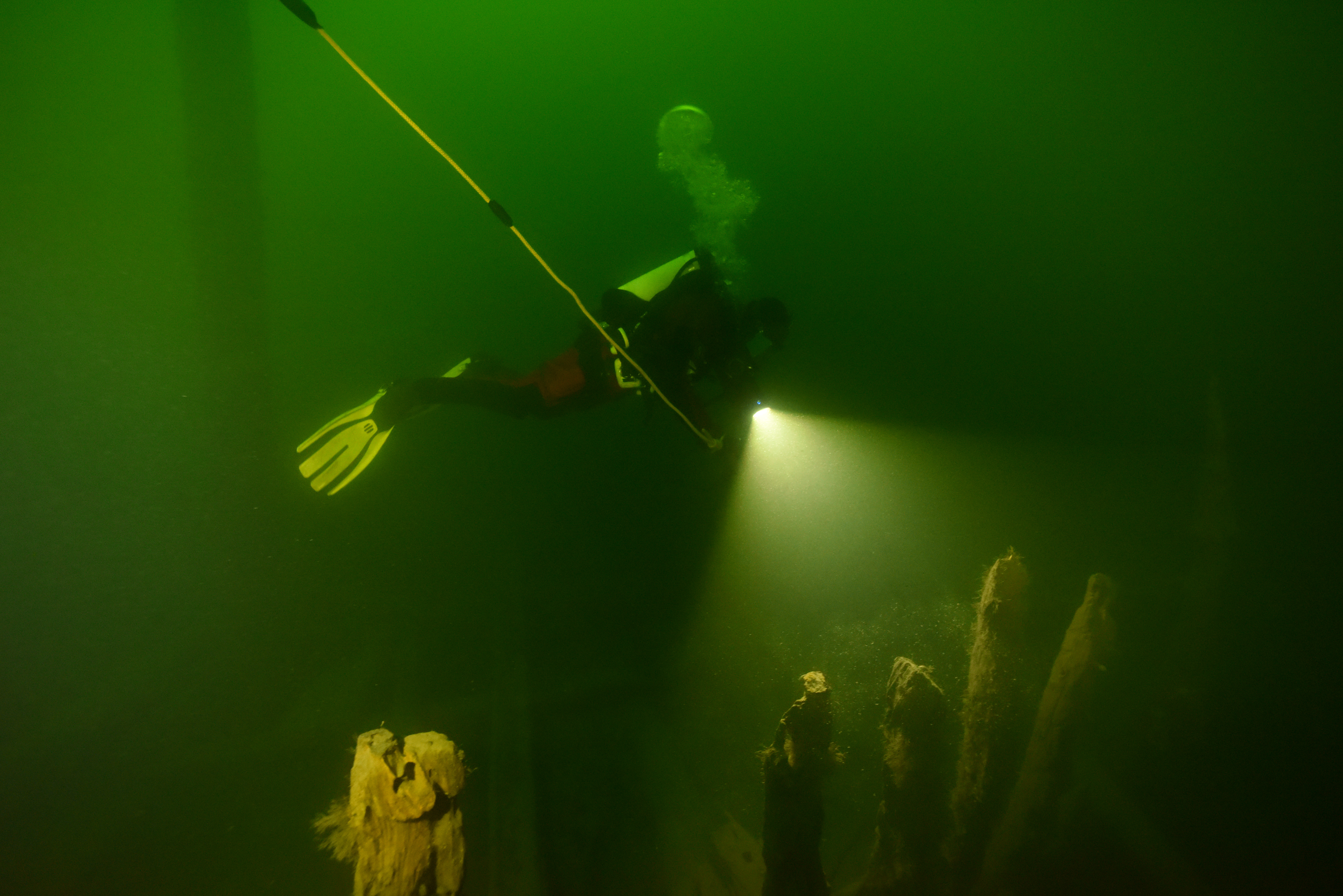
The Baltic Sea has been our route to the world around us for millennia, and it has left traces. A variety of underwater archaeological remains have been left behind, the most well-known being boat wrecks and shipwrecks. In Swedish waters, we know of around 17,000 wrecks, and in the Baltic Sea there might be up to 100,000 in total. Other remains also exist, such as downed aircraft, remains of old piers, and sunken prehistoric settlements and burial sites. New discoveries are being made all the time.
Such a huge number of preserved wrecks and other remains in the Baltic Sea are possible thanks to the sea’s unique preservation conditions.
The Baltic Sea is cool and dark, which helps to protect the remains. The water is brackish, meaning only slightly salty. In other seas with saltier water, the shipworm thrives – but in the Baltic Sea, it normally can’t survive. The shipworm is a type of mussel that feeds on organic matter and likes to eat the wood in old shipwrecks. The absence of shipworms is one key reason why the Baltic Sea can have so many exceptionally preserved wrecks and other remains of wooden objects.
The Baltic Sea is one of the world’s most polluted inland seas. This affects the sea’s animals and plants as well as the remains on the seafloor. And with a warmer climate, the shipworm might also be able to survive in the Baltic’s brackish waters. In 2009, it was confirmed that wrecks in the southern Baltic Sea were infested with shipworms.
Another problem is wreck looting. Unfortunately, people have been known to steal objects from the wrecks. When objects or wreckage parts disappear, we lose part of our common history.
More modern shipwrecks can themselves pose a threat to the marine environment. When metal ships rust, hazardous substances like heavy fuel oil or diesel can begin to leak out. Other dangerous remains lurk in the water, too. For example, many mines from the world wars remain at the bottom of the sea.